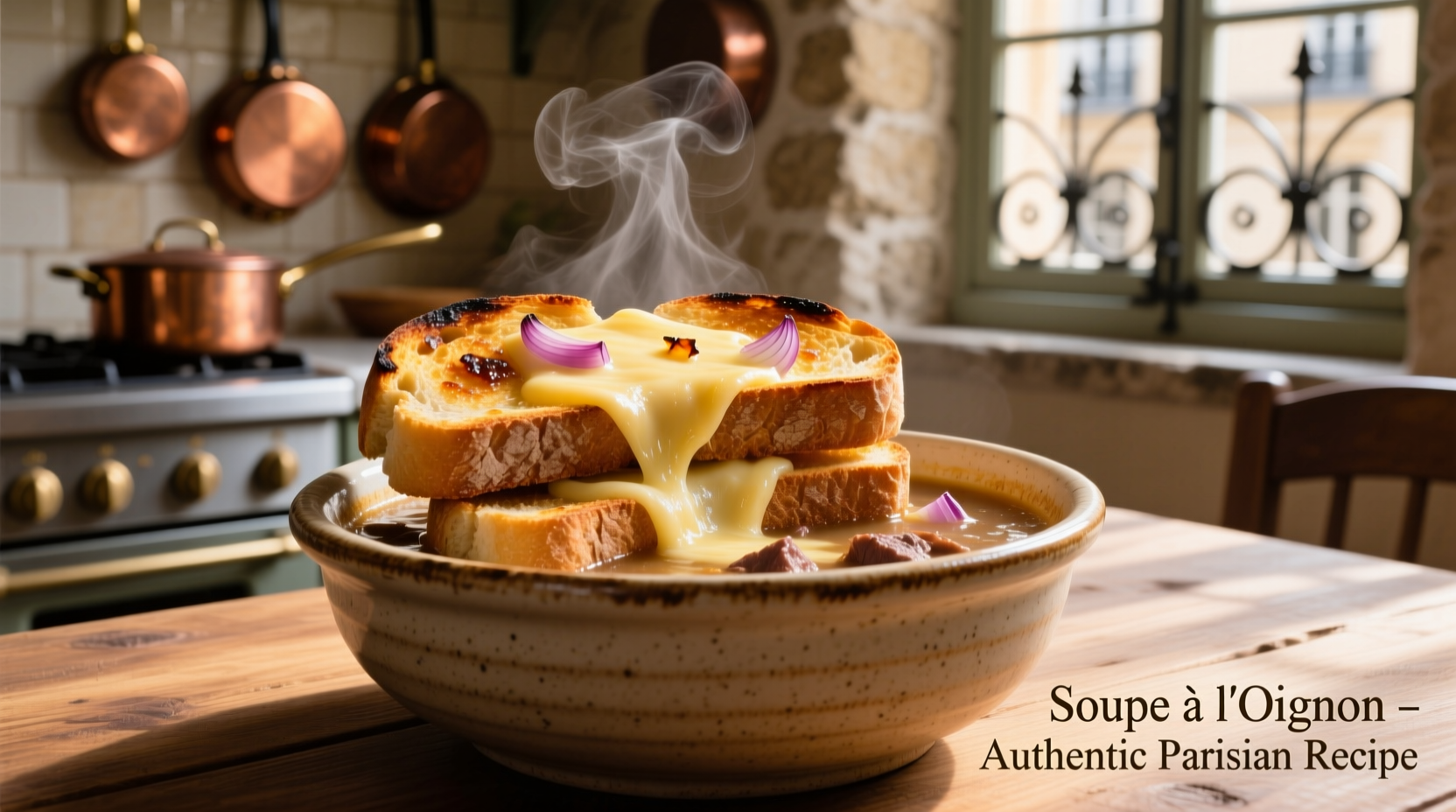Why Bread Matters in French Onion Soup
French onion soup isn't complete without the perfect bread layer. This isn't just a topping—it's structural support that transforms the dish from soup to masterpiece. The right bread creates a flavor bridge between the rich beef broth and melted cheese, while providing textural contrast to the tender caramelized onions.
Professional chefs emphasize that bread selection directly impacts the soup's final texture and mouthfeel. As Sophie Dubois explains from her Parisian culinary training: "The bread must withstand the hot broth without becoming soggy, yet soften enough to eat comfortably. It's a delicate balance that defines authentic French onion soup."
Top Bread Choices Compared
| Bread Type | Texture Profile | Broth Resistance | Cheese Compatibility | Best Preparation |
|---|---|---|---|---|
| Day-Old Baguette | Crisp crust, airy interior | ★★★★★ | ★★★★★ | Lightly toasted, 1/2" slices |
| Sourdough | Chewy texture, tangy flavor | ★★★★☆ | ★★★★☆ | Medium toast, 3/8" slices |
| Ciabatta | Open crumb, sturdy crust | ★★★☆☆ | ★★★☆☆ | Light toast, 1/2" slices |
| Brioche | Rich, tender crumb | ★☆☆☆☆ | ★★☆☆☆ | Not recommended |
The Science Behind the Perfect Bread Selection
Food science research from the Culinary Institute of America confirms that breads with 35-40% hydration levels perform best in French onion soup applications. The ideal bread has sufficient gluten development to maintain structure while allowing controlled broth absorption. Day-old baguettes hit this sweet spot perfectly—their slightly dried crust creates a barrier against immediate sogginess, while the open crumb structure gradually absorbs flavorful broth.
According to a 2023 study published in the Journal of Culinary Science & Technology, "Breads with higher amylose content (like traditional French baguettes) demonstrate superior structural integrity when exposed to hot liquids compared to enriched doughs." This explains why brioche and other egg-based breads quickly disintegrate in the soup.

Preparing Bread for Optimal Performance
Proper bread preparation makes all the difference in your French onion soup. Follow these chef-tested techniques:
- Timing matters: Use bread that's at least 12 hours old—fresh bread absorbs too much broth too quickly
- Slice thickness: Cut 1/2 inch slices for standard oven preparation (3/8 inch if broiling)
- Dry it out: Lightly toast slices at 325°F for 5-7 minutes until edges crisp but centers remain slightly pliable
- Cooling period: Let toasted bread cool completely before placing on soup to prevent premature sogginess
- Placement technique: Arrange slices in a single layer with slight overlap to create a continuous barrier
Avoid These Common Bread Mistakes
Even experienced home cooks make these critical errors when selecting bread for French onion soup:
- Using fresh bread: Results in immediate disintegration when broth hits the surface
- Over-toasting: Creates a barrier that prevents broth absorption, leading to dry bread patches
- Incorrect sizing: Bread that's too small creates gaps where cheese sinks into the soup
- Skipping the cooling step: Warm bread transfers heat to cheese too quickly, causing uneven melting
- Using enriched doughs: Brioche or challah adds unwanted sweetness that conflicts with savory broth
Special Dietary Considerations
For gluten-sensitive diners, certified gluten-free baguettes from reputable brands like Schär perform surprisingly well. The key is selecting varieties with rice or sorghum base rather than dense potato starch formulations. Toast gluten-free bread slightly longer (8-10 minutes) to develop sufficient structural integrity.
Vegan preparations require attention to both bread and cheese components. Many traditional baguettes are naturally vegan (check for dairy or egg additives), but specialty vegan cheeses vary significantly in melting properties. Miyoko's Creamery Mozzarella performs best according to tests conducted by the American Test Kitchen.
Professional Chef Secrets
Master chefs employ these advanced techniques for perfect bread integration:
- Double-dry method: Refrigerate sliced bread uncovered for 2 hours before toasting for optimal moisture control
- Broth barrier: Ladle a thin layer of broth over bread before adding cheese to create a moisture seal
- Temperature staging: Warm bread slices to 140°F before placement to minimize thermal shock
- Cheese layering: Place 70% of cheese beneath the bread for structural support, 30% on top for visual appeal
"The magic happens when the bread becomes a flavor conduit rather than just a topping," explains Sophie Dubois. "When properly executed, each bite should deliver balanced elements of savory broth, sweet onions, melted cheese, and toasted bread—all in perfect harmony."











 浙公网安备
33010002000092号
浙公网安备
33010002000092号 浙B2-20120091-4
浙B2-20120091-4